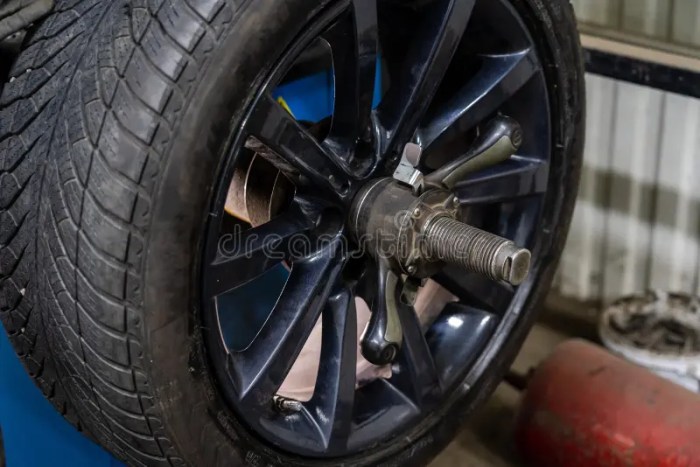Maintaining your car’s tires is crucial for safety, fuel efficiency, and extending the lifespan of your vehicle. This comprehensive guide provides a detailed overview of tire care and replacement for 2025, encompassing everything from routine checks to understanding tire technology and making informed replacement decisions. We’ll cover topics relevant to all drivers, from seasoned professionals to new car owners.
Understanding Your Tires: Key Terminology and Specifications
Before diving into maintenance, it’s essential to understand the basics. Your tire sidewall contains vital information, including:

Source: imsudatta.com
- Tire Size: (e.g., P225/60R17) This indicates the width, aspect ratio, construction, and wheel diameter. Understanding this is critical when replacing tires.
- Load Index: A number indicating the maximum weight the tire can carry.
- Speed Rating: A letter indicating the maximum speed the tire can safely handle. (e.g., H, V, W, Y)
- Tire Pressure (PSI): The recommended inflation pressure, usually found on a sticker inside the driver’s side doorjamb or in your owner’s manual. This is crucial for optimal performance and safety.
- Treadwear, Traction, and Temperature Ratings (UTQG): These ratings provide a relative comparison of tire performance in these areas. Higher numbers generally indicate better performance, but these are relative comparisons, not absolute measures.
- Manufacturing Date: A four-digit code (e.g., 2317 means the 17th week of 2023) indicating when the tire was manufactured. Older tires are more prone to degradation.
Tire Types and Technologies for 2025
The automotive tire market continues to evolve. In 2025, expect to see advancements in:
- All-Season Tires: Remain a popular choice, offering a balance of performance in various weather conditions. Improvements in tread design and rubber compounds continue to enhance their capabilities.
- Summer Performance Tires: Designed for optimal grip and handling in warm, dry conditions. These tires typically offer superior cornering and braking performance but may not perform well in cold or wet conditions.
- Winter/Snow Tires: Essential for driving in snowy or icy conditions. These tires feature specialized tread patterns and rubber compounds to provide superior traction on snow and ice.
- Run-Flat Tires: Designed to maintain drivability even after significant pressure loss. While offering convenience, they can be more expensive and provide a harsher ride.
- Eco-Friendly Tires: Increased focus on reducing rolling resistance to improve fuel efficiency and lower carbon emissions. These tires often incorporate innovative materials and tread designs.
Regular Tire Maintenance: A Step-by-Step Guide
Proactive tire maintenance is key to safety and longevity. Follow these steps regularly:
1. Checking Tire Pressure
Check your tire pressure at least once a month, and before long trips. Use a reliable tire pressure gauge and inflate to the recommended pressure (found on the sticker in your driver’s side doorjamb or owner’s manual). Remember to check the pressure when the tires are cold (before driving).
2. Visual Inspection
Regularly inspect your tires for:
- Tread Depth: Use a tread depth gauge or the penny test (insert a penny into the tread; if you can see Lincoln’s head, it’s time for new tires).
- Cuts and Punctures: Check for any embedded objects or damage to the sidewalls.
- Uneven Wear: Uneven wear patterns can indicate alignment or suspension problems.
- Bulges or Blisters: These indicate internal damage and require immediate replacement.
3. Tire Rotation
Rotating your tires every 5,000-8,000 miles (or as recommended by your vehicle manufacturer) promotes even wear and extends their lifespan. The rotation pattern depends on your vehicle; consult your owner’s manual for the correct procedure.
4. Wheel Alignment and Balancing
Have your wheels aligned and balanced regularly (every 6-12 months or as needed). Improper alignment can cause uneven tire wear, while imbalance can lead to vibrations and reduced handling.
When to Replace Your Tires
Several factors indicate it’s time for new tires:
- Worn Tread: Tread depth below 2/32 of an inch (or the penny test indicates low tread). This significantly reduces traction and braking performance.
- Visible Damage: Cuts, punctures, bulges, or blisters in the sidewalls or tread indicate compromised structural integrity.
- Age: Tires generally have a lifespan of 6-10 years, regardless of tread depth. Check the manufacturing date on the sidewall.
- Uneven Wear: Consistent uneven wear, despite alignment and rotation, may indicate underlying mechanical issues.
Choosing Replacement Tires
When selecting replacement tires, consider:
- Tire Type: Choose tires appropriate for your driving conditions and preferences (all-season, summer, winter, etc.).
- Tire Size: Use the size indicated on your current tires or consult your owner’s manual.
- Load Index and Speed Rating: Ensure the replacement tires meet or exceed the load and speed ratings of your original tires.
- Budget: Tire prices vary widely based on brand, type, and features.
- Reviews and Ratings: Research different tire models and read reviews from other drivers.
Tire Storage and Disposal
Properly storing and disposing of used tires is important for environmental reasons.
- Storage: Store unused tires in a cool, dry place away from direct sunlight and ozone.
- Disposal: Many tire retailers and recycling centers accept used tires for proper disposal. Check with your local authorities for options.
Frequently Asked Questions (FAQ)
- Q: How often should I rotate my tires? A: Typically every 5,000-8,000 miles, or as recommended in your owner’s manual.
- Q: What is the penny test? A: Insert a penny into the tread groove. If you can see the top of Lincoln’s head, your tread is worn and needs replacing.
- Q: How long do tires last? A: Typically 6-10 years, regardless of tread depth. Check the manufacturing date.
- Q: What causes uneven tire wear? A: Improper wheel alignment, suspension problems, or incorrect inflation pressure.
- Q: Can I use different tire sizes on my car? A: Generally no. Using different sizes can affect handling, speedometer accuracy, and potentially damage your vehicle.
- Q: How much do new tires cost? A: Costs vary widely depending on brand, size, and type. Expect to pay several hundred dollars per set.
Resources
- Tire Rack (A comprehensive resource for tire information and purchasing)
- National Highway Traffic Safety Administration (NHTSA) (Government agency providing safety information)
Call to Action
Regular tire maintenance is essential for safety and optimal vehicle performance. Schedule a tire inspection today and ensure your tires are in top condition for a safe and enjoyable driving experience. Contact your local tire professional or visit a reputable retailer to get started!
Query Resolution
What is the recommended tire pressure for my car?
The recommended tire pressure is listed in your vehicle’s owner’s manual and on a sticker typically located on the driver’s side doorjamb or fuel filler door. Always check and inflate your tires to the recommended pressure, not the maximum pressure listed on the tire sidewall.
How often should I rotate my tires?

Source: dreamstime.com
Tire rotation frequency depends on your vehicle and driving habits, but generally, it’s recommended every 5,000-8,000 miles. Consult your owner’s manual for specific recommendations.
What are the signs I need new tires?
Signs include low tread depth (below 2/32 of an inch), uneven wear, bulges or cracks in the sidewalls, and vibrations while driving.
How long do tires typically last?
Tire lifespan varies greatly depending on driving habits, road conditions, and tire type. However, most tires last between 30,000 and 50,000 miles.
